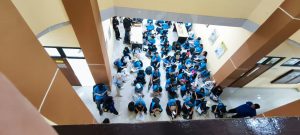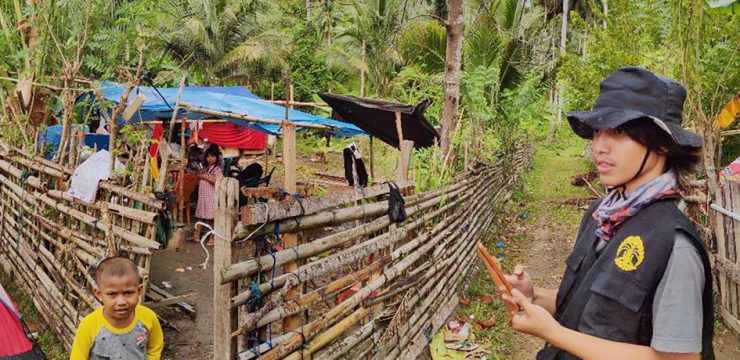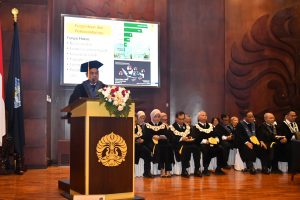In a panel discussion held on Saturday (10/11) at Building C FMIPA UI, Depok. The Geography volunteer team of FMIPA UI, which is part of the UI Peduli team, presented post-disaster data in Central Sulawesi.
The Geography volunteer team of FMIPA UI was directly involved in the emergency response phase of disaster management. They were divided into 3 batches that were sent at different times.
Batch I departing on 4-10 October 2018 was tasked with conducting Building Mapping, Accessibility and Refugee Points. Followed by the departure of Batch II on 10-17 October 2018 and Batch III on 22-26 October. Batch II & III have the same task, namely conducting Building Mapping, Public Facilities and Social Mapping.
Anggoro Tri Muldigono from batch I explained, in providing basic spatial data of the affected areas, the Department of Geography, FMIPA UI collaborated with various parties such as the Humanitarian Openstreetmap Team (HOT) through the Mapping Marathon (mapathon) activity which succeeded in mapping 5,122 of the total 26,663 existing buildings in 3 days and with ESRI Indonesia through the data portal workshop and operational dashboard workshop as a media for publishing its data.
In carrying out their duties, Anggoro and the team admitted to facing several obstacles, including disruptions to communication and electricity networks that are being repaired by PLN, the condition of the main road in Labean District, Donggala Regency, and the condition of the road in Lende Tovea village, Labuana hamlet, Balaesang District - Sirenja District.
"The distribution of the refugee points there is uneven, some have their logistics distribution hampered because the road access to the refugee points was damaged by landslides, so it takes a long time to reach the intended location," said Anggoro.
From the first and second groups, data was obtained regarding the number of damaged buildings, where Donggala district was the location most affected by the disaster.
Rijali Isnain Haripa in his presentation entitled related to the process of producing maps affected by the earthquake and tsunami in Palu and Donggala explained that from spatial mapping it was found that a total of 3,396 buildings were severely damaged, while 1,993 buildings were moderately damaged and 596 other buildings were lightly damaged.
According to him, the classification of building damage is based on how big the impact of the disaster is on the building. The damaged category is when a building is completely leveled to the ground.
Meanwhile, moderate damage means that the building only experienced cracks or was partially destroyed, and minor damage means that the building did not experience significant damage, only small cracks in the walls and fences of the house.
Based on validated data, Rijali continued, the mapping team on duty on campus produced a map of areas suitable for temporary housing (Huntara) and a map of areas affected by multiple disasters.
According to him, these maps can help rehabilitation and reconstruction activities in disaster areas and help the disaster risk-based spatial planning process.
"Disaster risk reduction efforts are not merely an expense but must be considered as an investment in development," said Rijali.
In addition to validating building damages, the FMIPA UI geography volunteer team also carried out other field activities such as coordinating the distribution of aid to disaster victims, providing and installing solar panels, assisting the medical team, and building UI Peduli post tents.
News source: https://sci.ui.ac.id/




